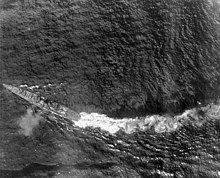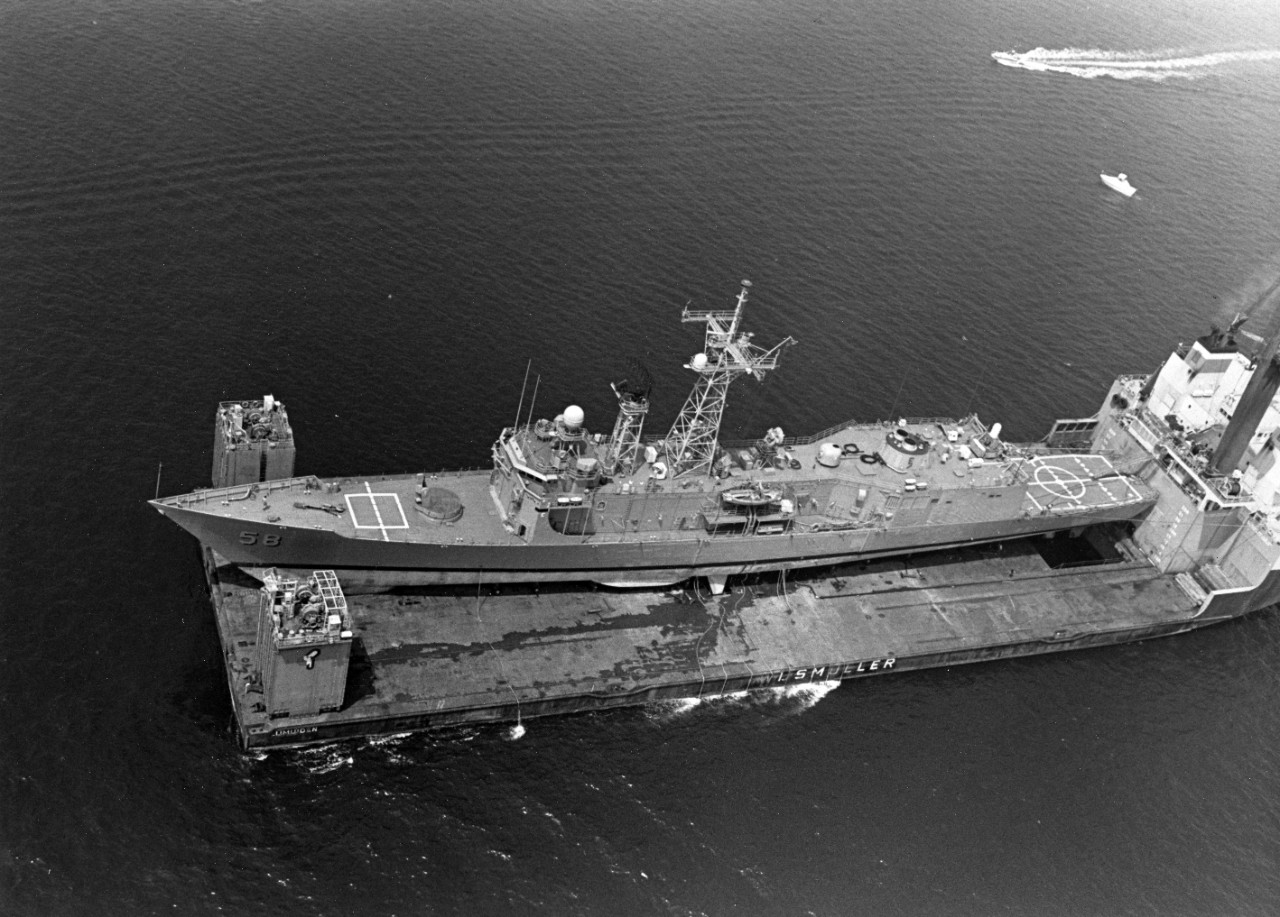The Time Tested Strategy of Divide and Conquer Socially and Militarily Pt. 2

It would be impossible to continue on with Part 2 without the noble mention of further actions taken by the elements of Taffy 1, 2, and 3 against a massively superior Japanese armada that for all practical means and purposes should have crushed the small poorly defended fleet under Rear Admiral Sprague. If that had happened, then too the troops ships that were to land on the shore of several Philippine shores would have been slaughtered and with the loss of the aircraft belonging to all of the escort carriers the air superiority of Halsey’s 3rd Fleet would have been compromised considerably especially with the first appearance of the Kamikaze’s who destroyed a Light Carrier during the Leyte Gulf engagement.

In recognition of
Hats off to the US Destroyer and her crew, the USS Samuel B. Roberts who was said to have fought like a battleship instead of the aging small warship that she was. In memoriam, thanks to all US destroyers and destroyer escorts who were never designed to slug it out with massive battle ships and cruisers as they were deployed for escorting slow merchant vessels against submarine attacks and had been built in the 1920’s. Yet, they fought a virtual suicidal battle with a superior force and prevented a huge upset for the American forces present in the Philippine Sea.

Efforts by the little carriers
Totally unprepared for a major battle and always dependent on larger US warships for protection the slow and poorly armed escort carriers launched dozens of aircraft and recovered them over and over again as they flew on aerial attack missions against the 6 Japanese cruisers, the super battle ships the Musachi and the Yamato along with their destroyer screen. The planes were not properly armed for this type of fighting given the desperate circumstances so they strafed, dropped depth charges, used rockets, and even ran dry runs to keep the Japanese constantly distracted from pursuing the escort carriers themselves, their main objective.
Tactics that helped win the day
The US Destroyers the USS Hoel, USS Heerman, USS Samuel B. Roberts, and the USS Johnston who fought courageously used smoke screens in addition to the 5 inch shells they were equipped with and their torpedoes. The smoke screens helped frustrate targeting efforts by the Japanese to further add to the confusion of the battle. In defending the escort class carriers, the USS Gambier Bay, the USS St. Lo, the USS Fanshaw, the USS White Plains, the USS Kalinin Bay, and USS Kitkun Bay to the loss of only two of those “Jeeps” they kept the loss of life and essential hardware to a minimum! This retiring action by the outclassed US destroyers along with the last minute launches of FM-2 Wildcats, F6F Hellcats, and TBM Avengers to conduct desperate aerial attacks against the huge Japanese task force a disaster was everted and was perhaps even more spectacular than the Battle of Leyte Gulf.
Doomed from the start
Perhaps, the most historical example of a military defeat in US history due to the willful division of forces prior to entering a battle is General Custer’s probe into the territory of the Little Big Horn River and surrounding terrain. There is somewhat of a controversy over whether general Custer was ordered ahead of Colonel Gibbon and General Terry’s columns or insisted on taking his 7th Cavalry Regiment 24 hours ahead of a coordinated force of all available units to engage the large encampment on his own.
Too many hostiles to handle
Unbeknownst to Custer and his men, they were walking into a merged gathering of tribes, the Cheyanne, the Hunk Papa Sioux, the Lakota Sioux, and the Dakota Sioux, all massed for a celebration in the “Valley of Chieftains” as they called it. A huge encampment, larger than anything Custer’s Anikara Scouts had ever seen, would loom in front of the 7th Cavalry shortly before the battle. Planning on making his attack the next day, he was informed by his Indian scouts that the Plains Indian tribes who established camp had discovered the trail wagon tracks of the 7th Cavalry and were probably already aware of the cavalry presence.
In haste, George Armstrong Custer decided his element of surprise was now gone and if he did not move quickly the occupants of the village encampment would scatter from the area. Custer’s plan was to hold the women, children, and elderly hostage in order to discourage attacks by the armed warriors. The entire objective was a reconnaissance movement with Custer given discretion to take further action if he saw fit, and that would be his undoing. The Indian scouts, the troopers, and Custer’s officers could only guess at the size of the opposing forces that were ready to pounce.
In consistence with the “Divide and Conquer” doctrine General Custer split his twelve companies into 3 separate battalions. Major Reno’s command of companies A, G, and M would engage the large Indian encampment. To do that Reno and his men would have to ford the Little Big Horn River. Captain Benteen with Companies D, H, and K was to reconnoiter south of the encampment and approach from there. This left General Custer with 5 companies. He assigned one remaining company under Captain McDougall and his men to attend to the pack train of supplies and ammunition, so with 712 men at his command Custer had split his force into 4 detachments weakening troop strength for each unit and sending them into an unsure situation with enemy strength they could only guess at.
Once Major Reno’s men arrived at the Indian camp they established a skirmish line with their single shot breach loaded .45 caliber Springfield carbines with a trooper forced to attend to 4 horses every few yards cutting his firepower by 24%. It is said that his troopers had shot some wives and children of Chief Gall enraging the tribal leader and causing a surge of armed warriors to emerge from the village. From his left flank came horse mounted braves, armed and willing to engage Reno’s Companies. In short order outnumbered 5 to I and forced to dissolve an orderly skirmish line, Reno ordered a poorly executed retreat leaving his wounded behind while losing 29 troopers and 3 officers run down, clubbed in the head, or shot as they ran to catch up!
Some horses mounted by their men fell backwards climbing the hill that Reno desperately withdrew to in order to establish a defensible position. He was joined by that time by Captain Benteen and his companies. Reno’s Indian Scout, “Bloody Knife” was struck in the head by a bullet spraying his blood and brain fragments all over Reno’s face! Neither Benteen or Reno could see Custer’s battle but could hear rifle volleys and saw smoke and dust rising into the sky. Even though Benteen had been ordered by courier to attack the village and bring the pack train with him, there had obviously been a disruption in situational awareness. Under heavy assault by perhaps thousands of Plains Indians, the troopers were hard pressed to survive much less worry about Custer’s predicament!
Breakdown of the mission
Had General George Armstrong Custer’s command remained intact as one large unit they probably would have prevailed as his aggressive battle charges had led him and the Union Army to many victories, but Custer’s ambition exceeded his resources and disaster overtook him. An estimated 6,000 Plains Indians had made camp in the vicinity of the Little Big Horn and Custer, without adequate intelligence or sufficient numbers had walked right into a hornet’s nest. His widely separated companies could not possibly consolidate their positions with Custer’s main force, not even knowing exactly where he and his beleaguered troopers were.
A debunked myth?
Controversy over the famed theory of “Custer’s Last Stand” has now come into question by several battlefield forensic studies with field findings of spent shells, body placement, and Plains Indian survivor accounts all conflicting. It seems that Custer either led a charge across the Little Big Horn River that was quickly blunted by superior enemy numbers forcing his retreat to the hill he attempted to establish a defense on, or he and his companies were simply overwhelmed before they could make an orderly defensive stand. Perhaps small bands of troopers encircled themselves and attempted to fight to the death.
Just an illusion?
The famous vision of Custer and his doomed troopers putting up a defiant defense in the face of certain death, separated from Reno and Benteen’s forces seems more of legend than fact in view of battlefield studies. Yet, no one will ever know for certain just what actually happened since no one survived in Custer’s regiment. Only the ghosts of those combatants could speak if anyone could listen. In the words of one of the 7th Cavalry’s Indian scouts speaking to General George Armstrong Custer minutes before the engagement began he said, “ You and I are going home today by a road we do not know."[ Those ominous words seem to be an exact harbinger of the fate of George Armstrong Custer and his men, and their Crow and Anikara Indian scouts.
Ironies over the events at the Little Big Horn
- It was the Indian nation of the Crows who had requested that the US Cavalry remove the Lakota and other tribes who had been attacking them and raiding their food sources.
- The Crows wept and grieved when they learned of Custer’s death. They had named him the “Son of the Morning Star”.
- General Custer had met with Chief Sitting Bull before the battle pleading with him to return to his reservation so they could avoid a bloody confrontation.
- The Plains Indians had two nicknames for Custer. 1) Yellow Hair for his long blonde curly hair. 2) Iron pants because Custer could ride for weeks in pursuit of the Indians, demanding even by their standards.
- Forensics studies of the remains of Custer's troopers reveals that many were malnourished. Many skeletal remains showed deterioration of connective tissue such as ligaments and spinal disks indicating that their hard lives in the saddle and poor nourishment probably contributed greatly to their fatigue and lack of alertness.
In short, it would seem that the “Divide and Conquer” strategy of military as well as political persuasion is a double edged sword that cuts both ways with an unexpected outcome whenever used. One might also recall how many of Joseph Stalin’s political allies in the conversion of Russia to a Communist regime ended up with a bullet to the head. Those very comrades of the rebellion who had implemented the “Divide and Conquer” doctrine against their political opposition!
"Destroying the New World Order"
THANK YOU FOR SUPPORTING THE SITE!
Latest Activity
- Top News
- ·
- Everything
All In The Family | Mike Meets Archie For The First Time | The Norman Lear Effect
In the Political Realm They've Gone One Step Too Far!
All In The Family | Mike Meets Archie For The First Time | The Norman Lear Effect
America Copied Germany’s Jerry Can — But Missed The One Genius Detail that Made All the Difference
© 2026 Created by truth.
Powered by
![]()
You need to be a member of 12160 Social Network to add comments!
Join 12160 Social Network